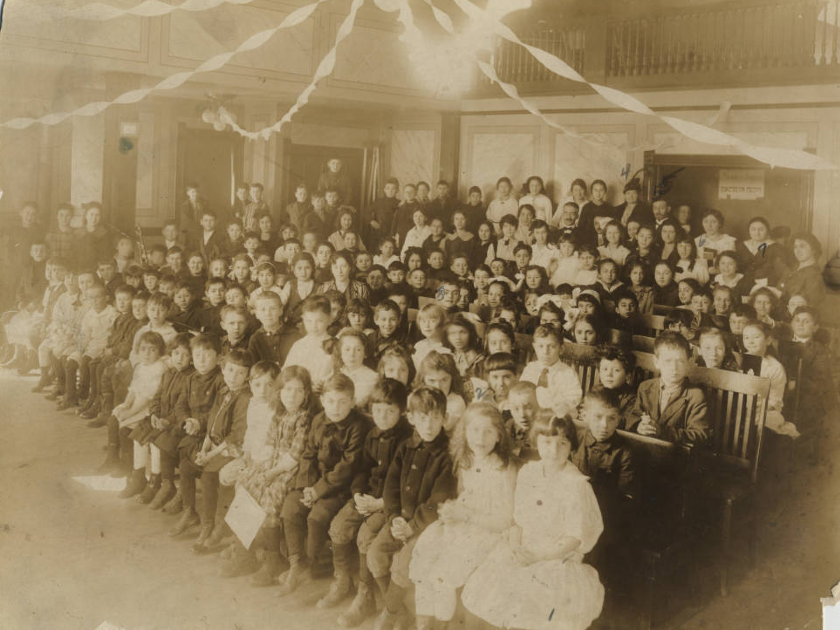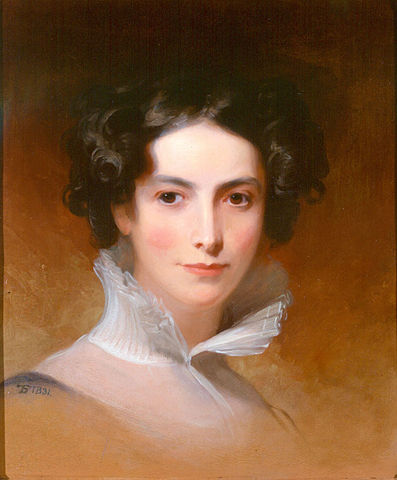
Student at the Moses Montefiore Hebrew School in Duluth, Minnesota, 1916
Steinfeldt Photography Collection
Sunday school is an American Jewish rite of passage that children love to hate. While complaining about forced attendance and boring lessons, and yearning for weekend soccer practice, generations of young Jews have spent their Sunday mornings in synagogue classrooms. As one parent memorably recalled, quoted in an article for Anthropology & Education Quarterly, his child told him that hated going to Sunday school, and he replied “Edward, that’s wonderful. You’re carrying on a Jewish tradition. Because when I went, I hated it, too.”[1]
It seems as though few Jews have anything good to say about Sunday school. In popular culture, it has been derided — mocked by Philip Roth in his short story Defender of the Faith, and satirized by the Coen Brothers in their film A Serious Man. Is this really the full story? Has such an indelible institution really offered nothing of value to generations of American Jews?
These are the questions that I set out to explore in Jewish Sunday Schools: Teaching Religion in Nineteenth-Century America. It seemed to me that there was more to say about this institution, disdained by so many, yet so ubiquitous in American Jewish life. There was undoubtedly a gendered component to these critiques too. Ever since the first Jewish Sunday school was founded by Rebecca Gratz in 1838, the teachers who have given up their Sunday mornings to teach young Jews about Judaism have overwhelmingly been female. Scholars of Jewish education have pulled no punches in their gendered appraisals of the women who taught Sunday school. As I leafed through histories of American Judaism, I read that the curricula taught in Sunday schools was “thin,” “feminized,” and an “act of surrender.” One archivist looked at me in disbelief when I came to him one day to use the materials in his institution’s collection. “Why on earth would you want to study that?” he asked me. “There’s nothing worth learning there.”
He was wrong.
What I found, when I took Sunday schools and their teachers seriously, was that the women who taught in Jewish classrooms across the country during the nineteenth century were skilled educators. They wrestled with the pre-eminent questions of Jewish life in modernity: what did it mean to be Jewish in a world where it was also possible to live as a citizen of broader society? What would a Jew need to know in order to maintain a Jewish identity and a sense of belonging to a Jewish community?
These were questions that nineteenth-century rabbis and philosophers debated extensively. They wrote lengthy philosophical treatises conceptualizing the implications of modernity for Jewish thought, and they devised theological statements of modern Judaism in documents like the Pittsburgh Platform. These texts are well-known today, taught regularly in college classes on modern Jewish thought, and the subjects of numerous academic books and dissertations. Yet few have taken note of the work of the women who, at a grassroots level, had to bring these ideas down to earth and figure out how to teach these concepts to children.
Few have taken note of the work of the women who, at a grassroots level, had to bring these ideas down to earth and figure out how to teach these concepts to children.
Part of the reason why the educational labor of these women has been dismissed so condescendingly is that, admittedly, they had little Jewish training of their own to bring to the task. Most of the women who taught at Jewish Sunday schools had received little Jewish schooling of their own as girls. Few could read or write Hebrew, or navigate a siddur (Hebrew prayer book).
Many of them did, however, have other kinds of expertise that they brought to the work of teaching their young charges. Jewish women in the mid- to late- nineteenth century trained as teachers in record numbers, and they brought this training to their Sunday morning classes. They might not have had Jewish expertise, but these women knew pedagogy, and they were at the forefront of pedagogical innovation in Jewish education.
Another reason that these women have been ignored is that Sunday schools ultimately became controlled by men. Rebecca Gratz’s school in Philadelphia was founded by women and led by women. It was a community institution open to all Jewish children, regardless of their ability to pay. But when Sunday schools were created beyond Philadelphia, and particularly when they were created under the auspices of congregations, male rabbis and all-male education boards typically took on administrative control. Women continued to play important roles as volunteer teachers in the classroom, but rarely did they have positions of leadership. Congregational schools were organized for the children of synagogue members, though some efforts were made to provide scholarships for children whose parents could not afford the expense of a synagogue seat. Ultimately what was founded as a community institution, open to anyone irrespective of financial resources, became, within a generation, incorporated into institutions that only some American Jews could afford.
In the twentieth century, Sunday schools became better known as Hebrew schools, reflecting a shift towards a more extensive Jewish curriculum, yet retaining the part-time, weekend model pioneered by Rebecca Gratz. Jewish education became co-opted as a lucrative source of income to prop up congregational dues, and a carrot to entice prospective B’nai/B‑Mitzvah families to commit to synagogue membership.

Painting of Rebecca Gratz by Thomas Sully
As a millennial parent of two Jewish children, I think often about how different this model of Jewish education is from the vision of Rebecca Gratz. While Gratz’s model may have been thin from a curricular perspective, it was accessible and affordable for a generation of mostly immigrant parents who had few financial resources to expend. Her genius was to use the volunteer resources of her local community to ensure that every Jewish child could attend a Jewish school. Like so many others of my generation, I did not have access to generational wealth and had to take on significant debt to attend college. As I contemplate what my own children’s Jewish learning will look like, it strikes me that Gratz’s model offers food for thought indeed.
[1] David Schoem, “Explaining Jewish Student Failure,” Anthropology & Education Quarterly 13, no. 4 (1982): 312.
Laura Yares is Assistant Professor in the Department of Religious Studies at Michigan State University.